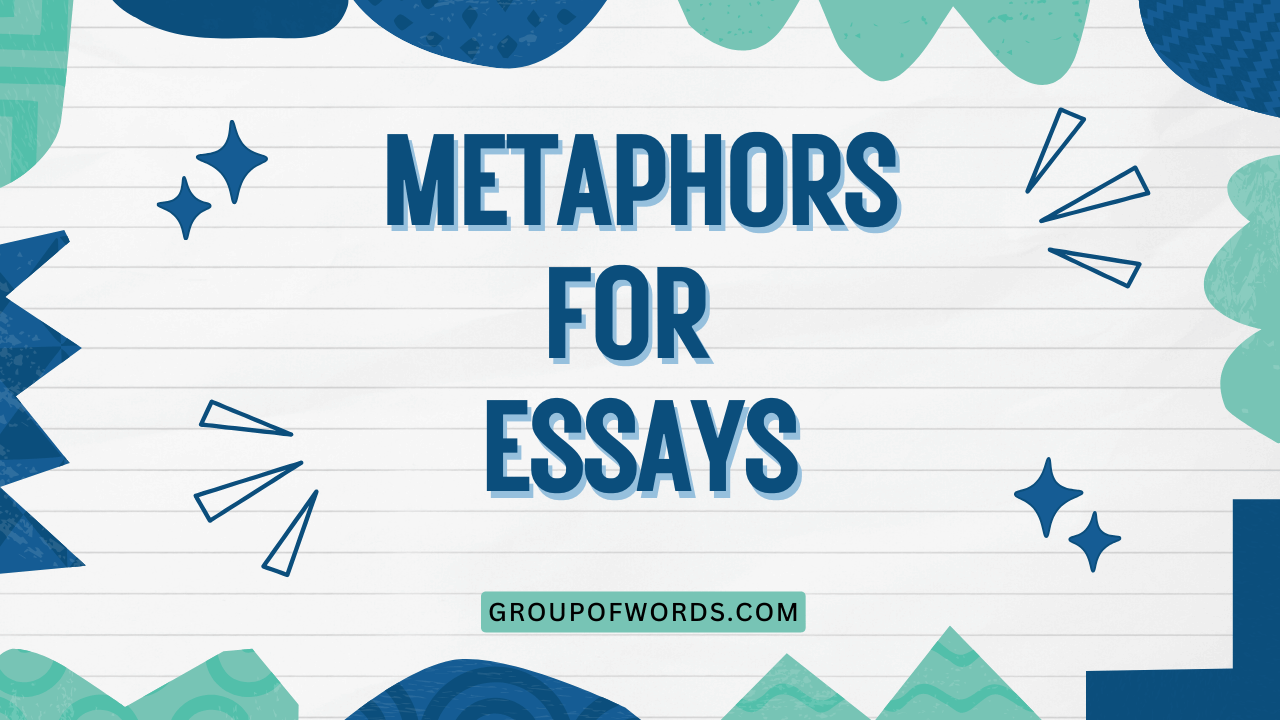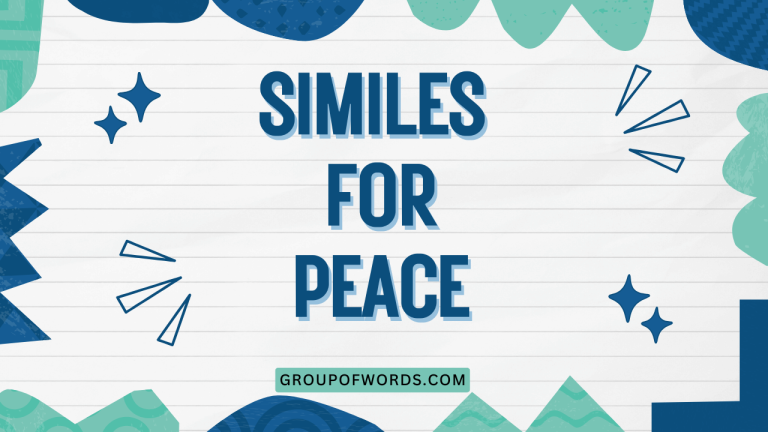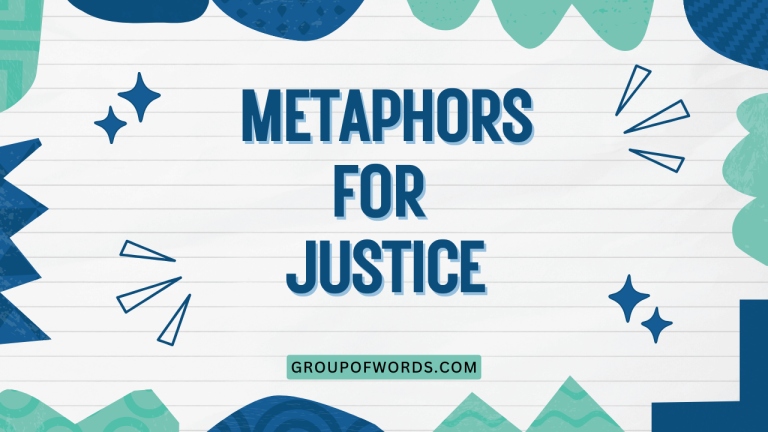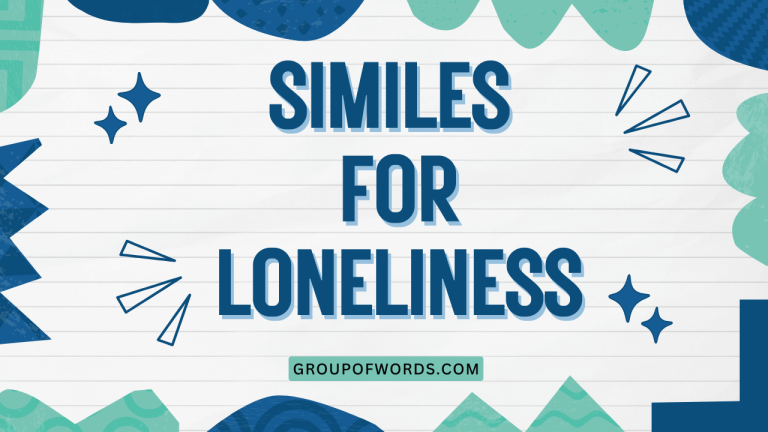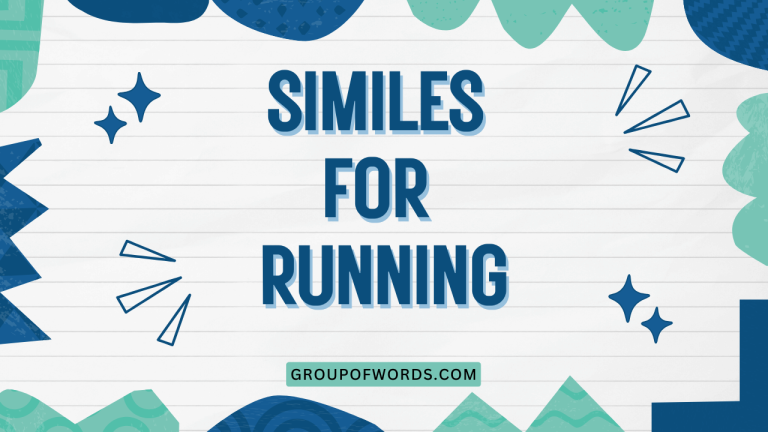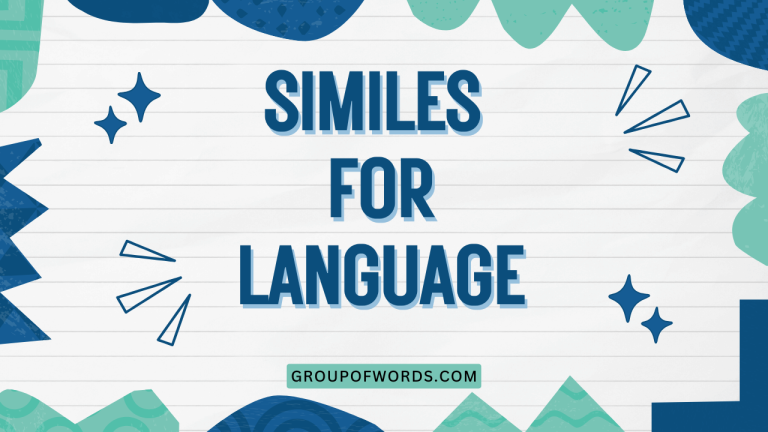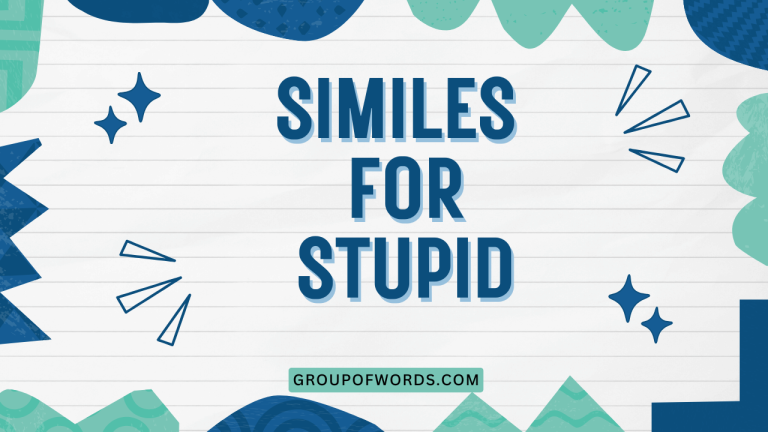Essay Metaphors: Enhancing Your Writing with Figurative Language
Metaphors are powerful tools in writing, transforming ordinary language into vivid and engaging prose. Mastering the art of using metaphors can significantly elevate the quality of your essays, making them more memorable and impactful.
This article provides a comprehensive guide to understanding and effectively using metaphors in essay writing. Whether you’re a student looking to improve your grades or a professional seeking to enhance your communication, this guide will equip you with the knowledge and skills to harness the power of metaphorical language.
This guide covers everything from defining metaphors and exploring their various types to providing practical examples and usage rules. We’ll also address common mistakes and offer practice exercises to solidify your understanding.
By the end of this article, you’ll be able to identify, analyze, and create compelling metaphors that enhance the clarity, depth, and artistry of your essays.
Table of Contents
- Introduction
- Definition of Metaphor
- What is a Metaphor?
- Classification of Metaphors
- Function of Metaphors in Essays
- Context of Metaphors
- Structural Breakdown of Metaphors
- Tenor and Vehicle
- Implicit vs. Explicit Metaphors
- Extended Metaphors
- Types of Metaphors
- Standard Metaphors
- Novel Metaphors
- Dead Metaphors
- Mixed Metaphors
- Examples of Metaphors in Essays
- Examples of Standard Metaphors
- Examples of Novel Metaphors
- Examples of Extended Metaphors
- Usage Rules for Metaphors
- Clarity and Relevance
- Avoiding Cliches
- Consistency in Tone
- Cultural Sensitivity
- Common Mistakes with Metaphors
- Mixed Metaphors – Mistakes
- Overused Metaphors – Mistakes
- Inappropriate Metaphors – Mistakes
- Practice Exercises
- Exercise 1: Identifying Metaphors
- Exercise 2: Creating Metaphors
- Exercise 3: Correcting Mixed Metaphors
- Advanced Topics in Metaphor Usage
- Cognitive Metaphor Theory
- Metaphor and Argumentation
- Frequently Asked Questions (FAQ)
- Conclusion
Definition of Metaphor
What is a Metaphor?
A metaphor is a figure of speech that directly compares two unrelated things, asserting that one thing is another, not just like it. Unlike a simile, which uses “like” or “as” to make a comparison, a metaphor implies a resemblance without explicitly stating it. This creates a more vivid and imaginative connection, allowing the reader to see the subject in a new light. The power of metaphor lies in its ability to transfer qualities from one concept to another, enriching the meaning and impact of the language.
For example, saying “time is a thief” is a metaphor. It doesn’t mean time literally steals things, but it conveys the idea that time passes quickly and takes away precious moments.
This concise comparison evokes a stronger image than simply stating that time passes quickly.
Classification of Metaphors
Metaphors can be classified based on their originality, complexity, and purpose. Here are some common classifications:
- Standard Metaphors: Commonly used metaphors that are easily understood.
- Novel Metaphors: Original and creative metaphors that provide a fresh perspective.
- Dead Metaphors: Metaphors that have become so common that they are no longer recognized as figurative language.
- Mixed Metaphors: Inconsistent or illogical metaphors that combine unrelated images.
- Extended Metaphors: Metaphors that are developed and expanded throughout a piece of writing.
Function of Metaphors in Essays
Metaphors serve several crucial functions in essay writing:
- Enhance Understanding: They can simplify complex ideas by relating them to familiar concepts.
- Create Interest: They make writing more engaging and memorable.
- Provide a New Perspective: They offer fresh insights and interpretations.
- Evoke Emotion: They can create a stronger emotional impact on the reader.
- Add Depth: They enrich the meaning of the text by layering associations and implications.
A well-chosen metaphor can transform a dry, factual essay into a compelling and thought-provoking piece of writing. They add a layer of artistry and sophistication to your prose, making it stand out and resonate with your audience.
Context of Metaphors
The effectiveness of a metaphor depends heavily on its context. Consider the following factors:
- Audience: Choose metaphors that your audience will understand and appreciate.
- Purpose: Ensure that the metaphor supports the overall argument or theme of your essay.
- Tone: Select metaphors that align with the tone and style of your writing.
- Subject Matter: Use metaphors that are relevant and appropriate to the topic you are discussing.
A metaphor that works well in one context may be confusing or inappropriate in another. Therefore, it’s essential to carefully consider the context when selecting and using metaphors in your essays.
Structural Breakdown of Metaphors
Tenor and Vehicle
I.A. Richards, a renowned literary critic, introduced the terms “tenor” and “vehicle” to describe the two components of a metaphor. The tenor is the subject being described, while the vehicle is the object or concept used to describe the tenor. In the metaphor “time is a thief,” time is the tenor, and thief is the vehicle. Understanding the relationship between the tenor and vehicle is crucial for analyzing and creating effective metaphors.
The vehicle should illuminate the tenor, providing new insights and perspectives. The connection between the two should be clear enough for the reader to grasp the intended meaning, but also subtle enough to spark imagination and reflection.
Implicit vs. Explicit Metaphors
Metaphors can be either implicit or explicit. An explicit metaphor directly states the comparison, often using the verb “to be.” For example, “The world is a stage.” An implicit metaphor, on the other hand, implies the comparison without directly stating it. For example, “He strutted and fretted his hour upon the stage.” Here, the comparison between life and a play is implied through the use of stage-related verbs, but it is not directly stated.
Implicit metaphors can be more subtle and sophisticated, but they also require more careful crafting to ensure that the reader understands the intended meaning. Explicit metaphors are more direct and easier to understand, but they can also be less impactful if not used creatively.
Extended Metaphors
An extended metaphor is a metaphor that is developed and expanded over several lines or even an entire piece of writing. It allows for a more detailed and nuanced comparison, exploring various aspects of the relationship between the tenor and vehicle.
Extended metaphors can add depth and complexity to your writing, creating a richer and more immersive experience for the reader.
For example, you might start with the metaphor “life is a journey” and then develop it by exploring different aspects of a journey, such as the challenges, obstacles, and rewards encountered along the way. Each element of the journey can be linked to a corresponding aspect of life, creating a cohesive and meaningful comparison.
Types of Metaphors
Standard Metaphors
Standard metaphors are commonly used and widely understood comparisons. They are often used to explain complex ideas in a simple and accessible way.
While they may not be as original or creative as novel metaphors, they can be effective in conveying a clear and concise message.
Examples of standard metaphors include “time is money,” “life is a journey,” and “the world is a stage.” These metaphors are so ingrained in our language that we often use them without even realizing that they are figurative.
Novel Metaphors
Novel metaphors are original and creative comparisons that offer a fresh perspective on a subject. They are often unexpected and thought-provoking, challenging the reader to see things in a new light.
Novel metaphors can add a sense of originality and artistry to your writing, making it stand out and resonate with your audience.
Creating novel metaphors requires imagination and creativity. Think about the qualities and characteristics of the tenor and then brainstorm for unexpected and unusual vehicles that share those qualities.
The more surprising and original the comparison, the more impactful the metaphor will be.
Dead Metaphors
Dead metaphors are metaphors that have become so overused that they have lost their figurative meaning. They are often used without any conscious awareness of their metaphorical origin.
While dead metaphors are generally harmless, they can also make your writing sound cliché and uninspired.
Examples of dead metaphors include “the heart of the matter,” “a head start,” and “falling in love.” These phrases were once vivid and imaginative comparisons, but they have become so common that they are now considered to be part of everyday language.
Mixed Metaphors
Mixed metaphors are inconsistent or illogical comparisons that combine unrelated images. They often occur when the writer is not paying close attention to the underlying logic of the metaphor.
Mixed metaphors can be confusing and distracting, undermining the clarity and effectiveness of your writing.
For example, “We need to nip it in the bud and iron out the wrinkles” is a mixed metaphor because it combines the image of cutting off a bud with the image of ironing out wrinkles, which are unrelated. To avoid mixed metaphors, carefully consider the images and associations that your metaphors evoke and ensure that they are consistent and logical.
Examples of Metaphors in Essays
Here are several examples of metaphors organized by category, demonstrating how they can be used effectively in essays.
Examples of Standard Metaphors
The following table contains 25 examples of standard metaphors suitable for essay writing. These metaphors are well-understood and commonly used, providing a solid foundation for enhancing your writing.
| Metaphor | Explanation | Example Sentence |
|---|---|---|
| Time is money. | Time is a valuable resource that can be spent or wasted. | In today’s fast-paced world, time is money, so we must use it wisely. |
| Life is a journey. | Life is a series of experiences and events that lead to growth and change. | Life is a journey filled with unexpected twists and turns. |
| The world is a stage. | Life is like a play, with people acting out different roles. | Shakespeare believed that the world is a stage, and we are merely players. |
| Ideas are seeds. | Ideas have the potential to grow and develop into something significant. | His innovative ideas are seeds that could revolutionize the industry. |
| Education is a key. | Education unlocks opportunities and opens doors to new possibilities. | Education is a key to a brighter future. |
| Arguments are war. | Arguments are battles in which people try to win. | The debate turned into a heated argument, and both sides prepared for war. |
| Love is a battlefield. | Love can be a struggle with many challenges and obstacles. | For many, love is a battlefield where hearts are won and lost. |
| Knowledge is power. | Having knowledge gives you influence and control. | In the modern age, knowledge is power, and those who possess it thrive. |
| A good book is a portal. | A book can transport you to another world or time. | A good book is a portal to new worlds and endless possibilities. |
| Laughter is medicine. | Laughter can heal and make you feel better. | They say laughter is the best medicine, and it certainly lifted my spirits. |
| The city is a jungle. | The city is a dangerous and competitive place. | Navigating the complexities of the city, she felt like she was in a jungle. |
| He is a lion in battle. | He is brave and strong in battle. | They say that he is a lion in battle, unmatched in courage and strength. |
| She is an angel. | She is kind and pure. | Her compassion and kindness were so profound; truly, she is an angel. |
| The internet is an ocean. | The internet is vast and full of information. | The internet is an ocean where information flows endlessly, both shallow and deep. |
| Failure is a stepping stone. | Failure can lead to success. | Each failure is a stepping stone on the path to success. |
| Dreams are maps. | Dreams help us find our way in life. | Dreams are maps that guide us toward our true desires and goals. |
| Art is a mirror. | Art reflects society. | Great art always acts as a mirror, reflecting society’s values and flaws. |
| Music is a universal language. | Music is understood by everyone. | Music is a universal language that transcends cultural boundaries. |
| A problem is a puzzle. | Problems need to be solved. | Every problem is a puzzle waiting to be solved with patience and intellect. |
| Memories are treasures. | Memories are precious. | Childhood memories are treasures that we carry throughout our lives. |
| Silence is golden. | Silence is valuable. | In times of chaos, silence is golden and allows us to reflect. |
| A politician is an actor. | Politicians perform for the public. | Many claim that a politician is an actor, playing a role to gain votes. |
| Change is the only constant. | Change is inevitable. | They say change is the only constant, and we must adapt to thrive. |
| The mind is a garden. | The mind needs to be cultivated. | The mind is a garden; what you plant, cultivate, and nurture will grow. |
| A leader is a shepherd. | Leaders guide and protect their followers. | A true leader is a shepherd, guiding and protecting their flock through any storm. |
These examples provide a starting point for using common metaphors effectively in your essays. Remember to choose metaphors that are appropriate for your topic and audience.
Examples of Novel Metaphors
The following table contains 25 examples of novel metaphors designed to add originality and creativity to your writing. These metaphors are less common and offer a fresh perspective on various subjects.
| Metaphor | Explanation | Example Sentence |
|---|---|---|
| Grief is a silent symphony. | Grief is a complex and profound emotional experience. | Her grief was a silent symphony, each note resonating with unspoken sorrow. |
| Hope is a fragile kite. | Hope is delicate and can easily be lost. | In the face of adversity, hope is a fragile kite, easily torn by the winds of despair. |
| Regret is a shadow that lengthens with the setting sun. | Regret grows stronger as time goes on. | Regret is a shadow that lengthens with the setting sun, haunting him with past mistakes. |
| Memories are fireflies in the jar of the mind. | Memories are fleeting and precious. | Memories are fireflies in the jar of the mind, glowing softly in the darkness. |
| Doubt is a rust that corrodes the soul. | Doubt gradually destroys one’s confidence and spirit. | Doubt is a rust that corrodes the soul, slowly weakening one’s resolve. |
| Fear is a venomous serpent coiled in the heart. | Fear is dangerous and paralyzing. | Fear is a venomous serpent coiled in the heart, ready to strike at any moment. |
| Time is a sculptor, carving wrinkles into the face of eternity. | Time shapes and changes everything. | Time is a sculptor, carving wrinkles into the face of eternity, leaving its mark on all. |
| Silence is a canvas where unspoken words paint vivid pictures. | Silence can be expressive and meaningful. | Silence is a canvas where unspoken words paint vivid pictures of longing and regret. |
| Anger is a wildfire consuming reason. | Anger is destructive and uncontrolled. | Anger is a wildfire consuming reason, leaving behind a trail of destruction. |
| Loneliness is a vast, starless night. | Loneliness is isolating and desolate. | Loneliness is a vast, starless night, where one feels utterly alone in the universe. |
| Courage is a lighthouse in the storm of life. | Courage guides and protects us through difficult times. | Courage is a lighthouse in the storm of life, guiding us safely to shore. |
| Success is a winding staircase, each step a challenge overcome. | Success requires effort and perseverance. | Success is a winding staircase, each step a challenge overcome and a lesson learned. |
| Failure is a compass pointing towards a new direction. | Failure can lead to new opportunities. | Failure is not the end, but a compass pointing towards a new, perhaps better, direction. |
| Love is a garden where patience yields the most beautiful blooms. | Love requires nurturing and care. | Love is a garden where patience yields the most beautiful blooms, cherished and admired. |
| Wisdom is an ancient tree with roots reaching deep into the past. | Wisdom is gained through experience and time. | Wisdom is an ancient tree with roots reaching deep into the past, its branches offering shade and refuge. |
| Knowledge is a mosaic, each piece adding to the overall picture. | Knowledge is cumulative and interconnected. | Knowledge is a mosaic, each piece of information adding to the overall picture of understanding. |
| The mind is a labyrinth, full of twists, turns, and hidden chambers. | The mind is complex and mysterious. | The mind is a labyrinth, full of twists, turns, and hidden chambers of thought and emotion. |
| Books are time machines, transporting us to different eras and worlds. | Books offer an escape and broaden our horizons. | Books are time machines, transporting us to different eras and worlds with every turn of the page. |
| Art is a bridge connecting hearts across time and space. | Art transcends boundaries and unites people. | Art is a bridge connecting hearts across time and space, fostering empathy and understanding. |
| Music is a river flowing through the landscape of our emotions. | Music evokes deep and varied emotions. | Music is a river flowing through the landscape of our emotions, sometimes calm, sometimes turbulent. |
| Dreams are whispers from the soul, guiding us towards our true purpose. | Dreams offer insight and direction. | Dreams are whispers from the soul, guiding us towards our true purpose and potential. |
| Challenges are mountains to be climbed, each summit offering a new perspective. | Challenges provide opportunities for growth. | Challenges are mountains to be climbed, each summit offering a new perspective and a sense of accomplishment. |
| Justice is a scale, carefully balancing rights and responsibilities. | Justice requires fairness and impartiality. | Justice is a scale, carefully balancing rights and responsibilities to ensure equality for all. |
| Society is a tapestry woven from diverse threads of culture and experience. | Society is complex and multifaceted. | Society is a tapestry woven from diverse threads of culture and experience, each contributing to the overall pattern. |
| The future is a blank page waiting to be filled with our actions and choices. | The future is uncertain and full of possibilities. | The future is a blank page waiting to be filled with our actions and choices, shaping the world to come. |
These novel metaphors aim to inspire creativity and depth in your writing, encouraging readers to see familiar subjects in a new and engaging light.
Examples of Extended Metaphors
The following table provides examples of extended metaphors, illustrating how a single metaphor can be developed throughout a paragraph or even an entire essay to create a cohesive and impactful message.
| Metaphor | Explanation | Example Paragraph |
|---|---|---|
| Life is a garden. | Life is like a garden, where we plant seeds, nurture growth, and face challenges like weeds and pests. | Life is a garden, and we are its gardeners. We plant seeds of hope and ambition, carefully tending to them with hard work and dedication. Yet, weeds of doubt and fear often sprout, threatening to choke our progress. But with perseverance, we can cultivate our garden, pruning away the negativity and nurturing the blossoming potential within. Just as a garden requires constant care, so too does life demand our attention and effort to flourish and bear fruit. |
| Education is a journey. | Education is a journey that begins with curiosity, continues with exploration, and culminates in enlightenment. | Education is a journey, a winding road that leads us from the familiar to the unknown. We begin with a thirst for knowledge, an insatiable curiosity that propels us forward. Along the way, we encounter obstacles and challenges, steep hills that test our resolve. But with each step, we gain strength and wisdom, broadening our horizons and deepening our understanding. Ultimately, the journey of education leads us to a summit of enlightenment, where we can see the world with new clarity and purpose. |
| The mind is a city. | The mind is like a bustling city, with different neighborhoods representing different thoughts, emotions, and memories. | The mind is a city, a sprawling metropolis of thoughts and emotions. In the bustling downtown, ideas are born and debated, skyscrapers of logic reaching for the sky. In the quiet suburbs, memories reside, each house a cherished moment from the past. Dark alleys of fear and anxiety lurk in the shadows, while parks of joy and contentment offer respite and peace. Navigating this complex urban landscape requires careful planning and a willingness to explore every corner, discovering the hidden treasures and confronting the challenges that lie within. |
| Friendship is a ship. | Friendship is like a ship, requiring constant maintenance, teamwork, and navigation through both calm and stormy seas. | Friendship is a ship, sailing through the vast ocean of life. To keep it afloat requires constant maintenance: regular communication, shared experiences, and a willingness to weather any storm together. The crew, the friends, must work as a team, each contributing their unique skills and perspectives to navigate the uncharted waters ahead. Sometimes the seas are calm, and the journey is smooth; other times, turbulent waves threaten to capsize the vessel. But with trust and loyalty as their guiding stars, the ship of friendship can weather any challenge and reach its destination, a harbor of unwavering support and companionship. |
| Writing is building a house. | Writing is like constructing a house, requiring a solid foundation, a well-structured framework, and careful attention to detail. | Writing is like building a house. First, you lay the foundation – a clear thesis statement that provides a solid base for your argument. Then, you construct the framework, organizing your thoughts and evidence into a logical structure. Each paragraph is a carefully built room, designed to support the overall narrative. You add windows of insight and doors of connection, inviting the reader to explore the depths of your ideas. Finally, you decorate with vivid language and compelling examples, adding the finishing touches that make the house of your writing truly unique and memorable. |
These examples demonstrate how extended metaphors can enrich your writing by providing depth, coherence, and a unique perspective on your subject matter. By developing a metaphor throughout your essay, you can create a lasting impression on your readers.
Usage Rules for Metaphors
Clarity and Relevance
The most important rule for using metaphors is to ensure that they are clear and relevant to your topic. A confusing or irrelevant metaphor will only distract your reader and undermine your message.
Choose metaphors that are easy to understand and that directly support the argument or theme of your essay. The connection between the tenor and vehicle should be apparent, and the metaphor should enhance rather than obscure the meaning of your writing.
Before using a metaphor, ask yourself: Does this metaphor help me explain my point more effectively? Is it easy for my audience to understand?
Does it add depth and interest to my writing? If the answer to any of these questions is no, then you should reconsider using the metaphor.
Avoiding Cliches
Cliches are overused metaphors that have lost their impact and originality. Using cliches in your writing can make it sound uninspired and predictable.
Instead of relying on tired metaphors, strive to create fresh and original comparisons that will capture your reader’s attention and offer a new perspective. If you find yourself using a common metaphor, try to twist it or add a unique element to make it your own.
For example, instead of saying “life is a roller coaster,” you could say “life is a rickety Ferris wheel, offering breathtaking views interspersed with moments of terrifying uncertainty.” This revised metaphor is more specific and evocative, adding a sense of originality to your writing.
Consistency in Tone
Your metaphors should be consistent with the overall tone of your essay. If you are writing a serious and formal essay, avoid using humorous or flippant metaphors that could undermine your credibility.
Similarly, if you are writing a lighthearted and informal essay, avoid using overly dramatic or pretentious metaphors that could sound out of place. Choose metaphors that complement the tone and style of your writing, creating a cohesive and harmonious effect.
Consider your audience and the purpose of your essay when selecting metaphors. A metaphor that works well in one context may be inappropriate in another.
Be mindful of the overall message you are trying to convey and choose metaphors that support that message.
Cultural Sensitivity
Be aware of cultural differences when using metaphors. A metaphor that is widely understood in one culture may be confusing or offensive in another.
Avoid using metaphors that rely on cultural stereotypes or that could be interpreted as insensitive or disrespectful. If you are writing for a diverse audience, choose metaphors that are universally understood and that are free from cultural bias.
Do your research and be mindful of the potential impact of your metaphors on different audiences. When in doubt, it is always better to err on the side of caution and choose a more neutral and universally understood comparison.
Common Mistakes with Metaphors
Mixed Metaphors – Mistakes
One of the most common mistakes is using mixed metaphors. This occurs when you combine two or more incompatible metaphors in the same sentence or paragraph, creating a confusing and illogical image.
For instance, saying “Let’s grab the bull by the horns and swim upstream” mixes the metaphor of seizing a challenge (“grab the bull by the horns”) with the metaphor of struggling against opposition (“swim upstream”). These images don’t fit together, resulting in a nonsensical statement.
Correct: Let’s grab the bull by the horns and tackle this challenge head-on.
Incorrect: Let’s grab the bull by the horns and swim upstream.
Correct: We need to stay afloat and keep our heads above water in this competitive market.
Incorrect: We need to stay afloat and nip it in the bud in this competitive market.
Overused Metaphors – Mistakes
Overusing common or clichéd metaphors can make your writing seem unoriginal and uninspired. Phrases like “thinking outside the box,” “a drop in the bucket,” or “the tip of the iceberg” have been used so frequently that they’ve lost their impact.
While they might be easily understood, they don’t add any depth or creativity to your essay. Strive to find fresh, new ways to express your ideas.
Correct: The unexplored potential is vast and largely untapped.
Incorrect: The unexplored potential is just the tip of the iceberg.
Correct: We need to approach this problem with innovative solutions.
Incorrect: We need to think outside the box to solve this problem.
Inappropriate Metaphors – Mistakes
Using metaphors that are inappropriate for your audience, tone, or subject matter can be jarring and ineffective. For example, using a highly technical or scientific metaphor in a general audience essay might confuse or alienate your readers.
Similarly, using a humorous or flippant metaphor in a serious or somber context can undermine your message.
Correct: The data suggests a complex interplay of factors.
Incorrect: The data suggests a quantum entanglement of factors (for a general audience).
Correct: The loss was a devastating blow to the community.
Incorrect: The loss was a total bummer for the community (in a serious context).
Practice Exercises
Exercise 1: Identifying Metaphors
Identify the metaphors in the following sentences. Underline the metaphor and explain what two things are being compared.
| Question | Answer |
|---|---|
| 1. Her words were a soothing balm to his wounded spirit. | Soothing balm: Words are compared to a healing ointment. |
| 2. The company is a well-oiled machine. | Well-oiled machine: The company is compared to a smoothly functioning machine. |
| 3. The internet is an information superhighway. | Information superhighway: The internet is compared to a vast road network. |
| 4. He is a shining star in the academic world. | Shining star: He is compared to someone bright and successful. |
| 5. The project was a runaway train, heading for disaster. | Runaway train: The project is compared to an uncontrollable train. |
| 6. Her smile was a ray of sunshine on a cloudy day. | Ray of sunshine: Her smile is compared to something bright and cheerful. |
| 7. The city is a concrete jungle. | Concrete jungle: The city is compared to a wild and harsh environment. |
| 8. Time is a river, constantly flowing. | Time is a river: Time is compared to a flowing river. |
| 9. Their relationship was a tangled web of lies. | Tangled web: Their relationship is compared to something complicated and deceitful. |
| 10. The speaker was a fountain | Fountain of Knowledge: The speaker is compared to a source of abundant knowledge. |
Exercise 2: Creating Metaphors
Create your own metaphors for the following concepts. Try to be original and imaginative.
- Friendship:
- Anger:
- Happiness:
- Fear:
- Love:
Here are some possible answers:
- Friendship: Friendship is a sturdy bridge, connecting two souls across the river of life.
- Anger: Anger is a volcano, dormant for a while, but capable of erupting with devastating force.
- Happiness: Happiness is a warm, sunny day after a long, cold winter.
- Fear: Fear is a dark shadow, lurking just behind you, ready to pounce when you least expect it.
- Love: Love is a delicate dance, requiring trust, patience, and a willingness to move in harmony.
Exercise 3: Correcting Mixed Metaphors
Rewrite the following sentences to correct the mixed metaphors.
- We need to nip it in the bud and iron out the wrinkles.
- Let’s hit the ground running and put all our eggs in one basket.
- The project is a runaway train, but we need to stay the course.
- He’s burning the midnight oil while juggling too many balls.
- She’s skating on thin ice while climbing the ladder of success.
Here are some possible corrections:
- We need to nip it in the bud before it becomes a bigger problem.
- Let’s hit the ground running and give this project our full attention.
- The project is a runaway train, and we need to regain control.
- He’s burning the midnight oil to meet all his deadlines.
- She’s skating on thin ice, taking risks to climb the ladder of success.
Advanced Topics in Metaphor Usage
Cognitive Metaphor Theory
Cognitive Metaphor Theory, developed by George Lakoff and Mark Johnson, posits that metaphors are not just linguistic devices, but fundamental structures of thought. According to this theory, our conceptual system is largely metaphorical, meaning that we understand abstract concepts in terms of more concrete ones.
For example, we often understand “argument” in terms of “war,” leading us to use phrases like “defend your position” or “attack their arguments.”
Understanding Cognitive Metaphor Theory can help you to be more conscious of the metaphors that shape your thinking and communication. By recognizing these underlying metaphorical structures, you can use metaphors more effectively to influence and persuade your audience.
Metaphor and Argumentation
Metaphors can be powerful tools in argumentation, helping you to frame your arguments in a compelling and persuasive way. By choosing metaphors that resonate with your audience’s values and beliefs, you can increase the likelihood that they will accept your point of view.
However, it is important to use metaphors ethically and responsibly, avoiding those that are manipulative or misleading.
When using metaphors in argumentation, consider the following:
- Choose metaphors that support your argument: Select metaphors that highlight the strengths of your position and the weaknesses of your opponent’s position.
- Be consistent with your metaphors: Avoid mixing metaphors or using metaphors that contradict each other.
- Be aware of the potential for misinterpretation: Ensure that your metaphors are clear and unambiguous, and that they cannot be easily misinterpreted or twisted by your opponents.
Frequently Asked Questions (FAQ)
Here are some frequently asked questions about using metaphors in essays:
How many metaphors should I use in an essay?
The number of metaphors you use in an essay depends on the length and purpose of the essay, as well as your writing style. In general, it’s better to use a few well-chosen metaphors than to overload your essay with too many.
Focus on quality over quantity, and ensure that each metaphor serves a clear purpose.
Can I use metaphors in all types of essays?
Yes, metaphors can be used in all types of essays, but they are particularly effective in argumentative, persuasive, and descriptive essays. In analytical essays, metaphors can be used to explain complex concepts and provide new insights.
Just be sure to use them appropriately and in a way that enhances your writing.
How can I come up with original metaphors?
Coming up with original metaphors requires creativity and imagination. Start by brainstorming a list of qualities and characteristics of the concept you want to describe.
Then, think of concrete objects or concepts that share those qualities. Look for unexpected and unusual connections, and don’t be afraid to experiment with different ideas.
What’s the difference between a metaphor and a simile?
A metaphor is a direct comparison between two unrelated things, stating that one thing is another. A simile, on the other hand, uses “like” or “as” to make a comparison, stating that one thing is like another. Metaphors are generally more powerful and evocative than similes, but they also require more careful crafting.
How do I avoid using mixed metaphors?
To avoid using mixed metaphors, carefully consider the images and associations that your metaphors evoke. Ensure that the images are consistent and logical, and that they don’t contradict each other.
If you’re unsure whether a metaphor is mixed, try visualizing the images in your mind. If the images clash or don’t make sense together, then you should revise the metaphor.
Conclusion
Metaphors are powerful tools that can significantly enhance the quality and impact of your essays. By understanding the different types of metaphors, following the usage rules, and avoiding common mistakes, you can effectively use metaphors to clarify complex ideas, create interest, and add depth to your writing.
Practice the exercises in this guide, and continue to experiment with different metaphors to develop your skills. With time and effort, you’ll be able to harness the power of metaphorical language to transform your essays into compelling and memorable works of art.
